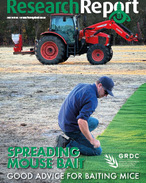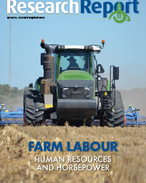This article is 8 years old. Images might not display.
The oxidative hydrothermal dissolution process, developed after Greenpower started looking beyond simple coal-to-liquids fuel projects, uses lignite from the Gippsland Basin and treats it to create a bio-stimulant fertiliser liquid.
The OHD process was invented by American scientist Professor Ken Anderson and converts carbonaceous materials, such as coal, into a range of low molecular weight organic compounds.
The coal is crushed, turned into a slurry and subjected to heat, pressure and liquefied oxygen in a process that is clean and recovers mostly water.
The trials, conducted at application rates between five litres per hectare to 70L/Ha found that at rates of between 5-35L/Ha crops developed at around three times the rate of the untreated control group.
There was a similar improvement in total fresh mass and a doubling of plant total dry mass per plant compared with the control group.
Further trials will now be conducted over other cereal crops, with a focus on canola and palm oil at the request of various potential partners.
Greenpower executive director Gerry King said further trials were aimed at enhancing OHD’s credibility.
“Given the inbound interest in potential off-take and partnering the company has sought to promptly undertake OHD trials on canola and palm oil plants given the global $US100 billion potential of these combined markets,” King said.
Greenpower believes these trials should deliver positive results, as studies have concluded that the OHD bio-stimulant fertiliser enhances reproductive activity in plants that produce flowers and seeds, as has been proven with tomato plants.
The Melbourne-based company says that bio-stimulant fertilisers have typically been too expensive to use on anything other than higher value crops, however using cheap coal as a feedstock reduces the costs by almost 90%.
Greenpower retains the exclusive OHD rights to the Australian and New Zealand Market for the next 15 years.
It has spent over $4 million over the past four years refining the process, and is now in discussions with off-take partners to move closer to commercialisation.
It is looking at developing a 20 tonne per day plant in the Latrobe Valley next year.






















